(All charts are used with the permission of The Solar Foundation, for which I am grateful.)
As I fell asleep last night, having filed the first piece in our three-part series on The Solar Foundation’s Diversity Report, I kept turning the numbers over in my head (yeah, I’m a little obsessive on this particular issue). And when I woke up this morning, there were two facts that stood out to me above almost all others:
- It’s amazing that despite clear differences in representation in the industry between people of color and Caucasians, it’s amazing how much of the disparity breaks on gender rather than racial lines; and
- Women of color are, to quote the greatest comedy of all time (according to the American Film Institute, although I strongly agree) Some Like It Hot, still getting the fuzzy end of the lollipop, even when compared to their Caucasian counterparts.
Let me show you what I mean:
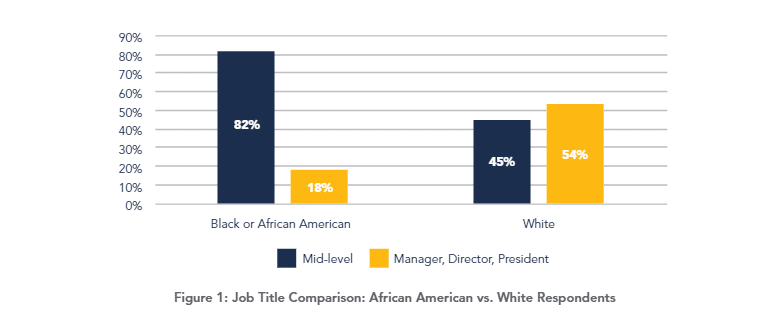
Look at that chart up there. Blacks/African Americans are heavily represented in mid-level jobs, but seem to plunge when it comes to reaching upper management positions in the industry. Now given what we discussed yesterday (that blacks/African Americans only make up approximately 7% of the industry at all), this wouldn’t be that unusual. But let’s go one chart deeper:
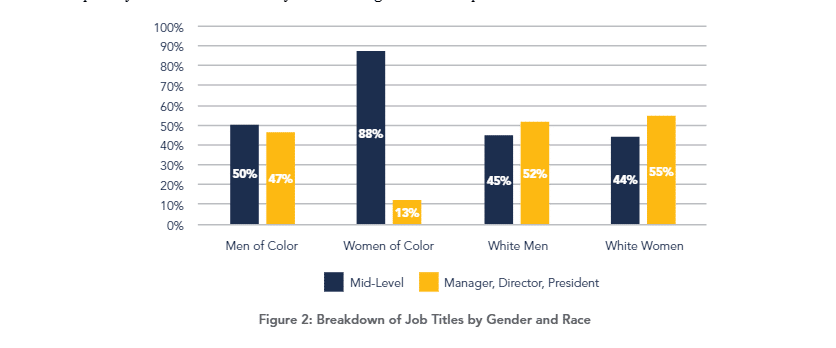
As you can see, Caucasian men and women are roughly at parity with men of color (men of color still trail, to be sure, but not by so much that the gap is outrageously noticeable at a scan level). So where does the disparity come from? Right, women of color, who are also the group to be least satisfied with their salaries and positions in the industry.
Caucasian women and women of color can still share sisterhood when it comes to wages, however, where even at executive levels (see the cart below), the study reveals the wage gap prevalent throughout the U.S. economy shows up in the solar industry, too (not surprising, but still infuriating – at least to the women in the industry and their allies).
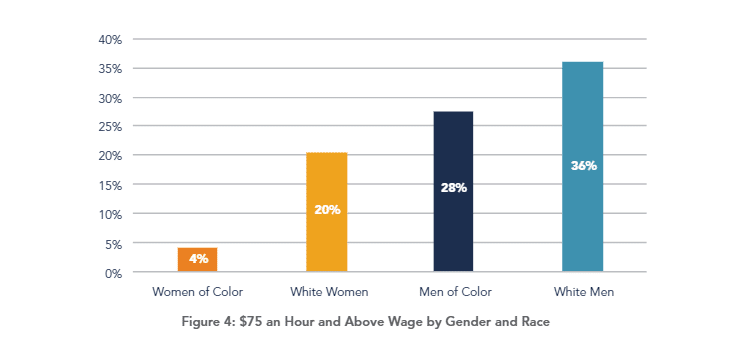
With those numbers, the question isn’t so much why there are so few women of color in the industry, but why there are any (and the doesn’t excuse the wage gap with Caucasian women, but….look at the women of color number. You practically need a microscope to see it.)
Finally, let’s talk how satisfied women and men are with both their positions and wages in the solar industry. Here’s the first chart that deals with overall satisfaction, broken down by race:
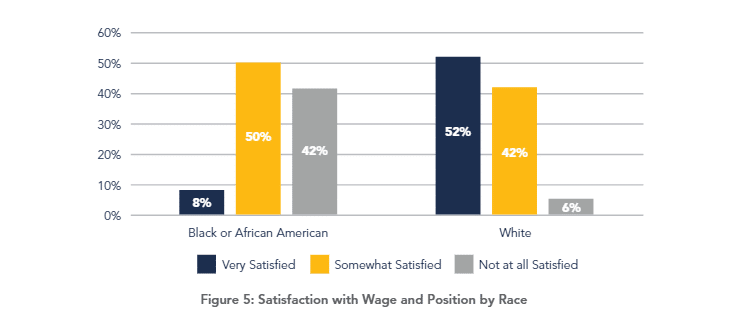
Again, it would appear that the relative satisfaction with both the wages and positions breaks down on race. But let’s take a closer look:
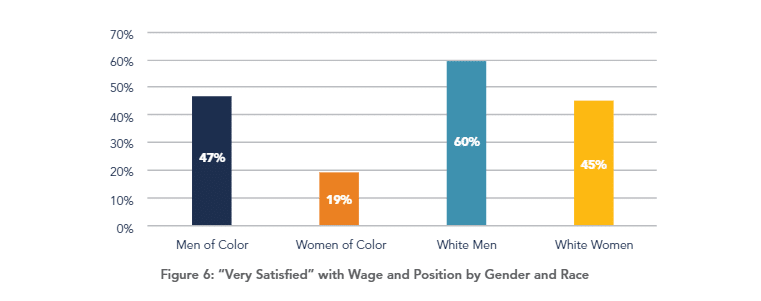
Again, the numbers break down by gender than race (though it is true that men of color and Caucasian women are almost statistically indistinguishable).
So here’s my takeaway from what the numbers show: The solar industry is surprisingly less diverse than one might anticipate, and Caucasians are clearly still largely in control. But the group solar has the biggest problem with, and the one that should cause the most concern, is women of color. Fortunately, the leaders at the top of this industry are thinking ahead and have proposed some excellent solutions, which I will examine in more detail in Part III of this report.
Interested in more news in solar diversity? Here’s another must-read story:
Solar jobs: Progress and challenges in diversity
Report: Diversity deferred, even in solar, is still diversity denied
SEIA Hosts Women’s Empowerment Summit to Advance Women’s Role in the Solar Industry
Hopper at SEIA completes women’s superfecta
This content is protected by copyright and may not be reused. If you want to cooperate with us and would like to reuse some of our content, please contact: editors@pv-magazine.com.








By submitting this form you agree to pv magazine using your data for the purposes of publishing your comment.
Your personal data will only be disclosed or otherwise transmitted to third parties for the purposes of spam filtering or if this is necessary for technical maintenance of the website. Any other transfer to third parties will not take place unless this is justified on the basis of applicable data protection regulations or if pv magazine is legally obliged to do so.
You may revoke this consent at any time with effect for the future, in which case your personal data will be deleted immediately. Otherwise, your data will be deleted if pv magazine has processed your request or the purpose of data storage is fulfilled.
Further information on data privacy can be found in our Data Protection Policy.